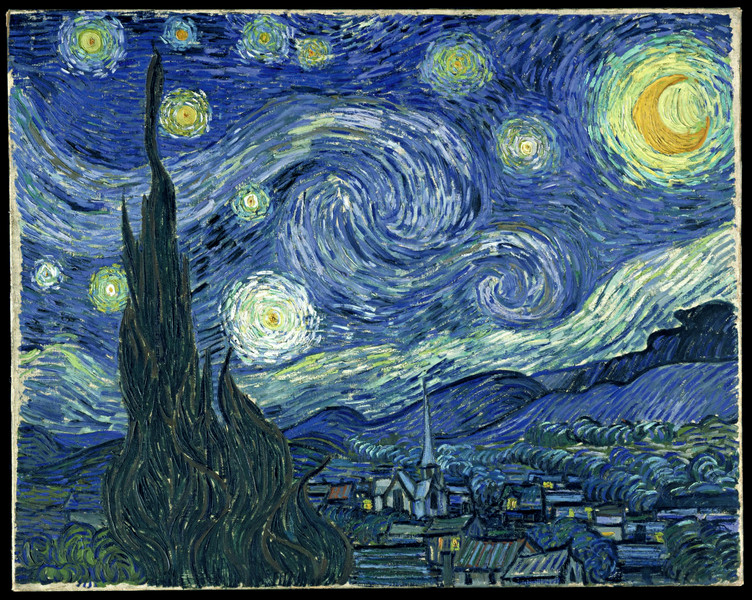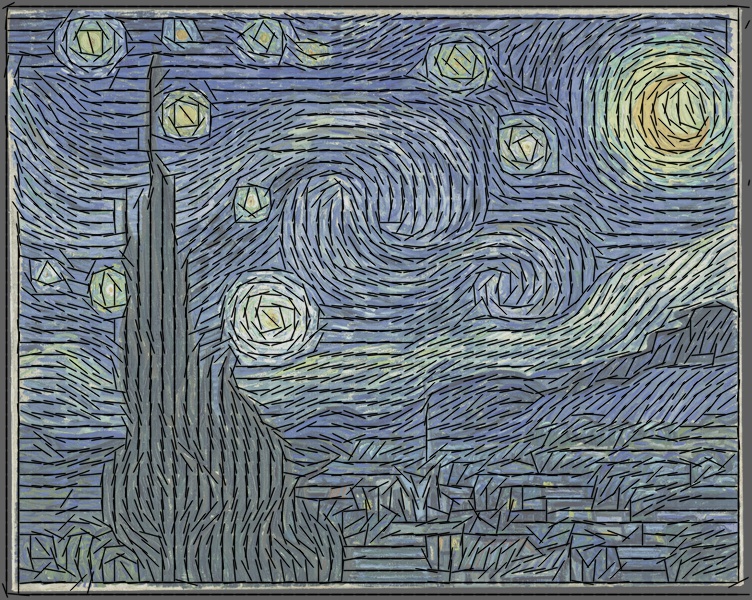Texture flow direction estimation.¶
This example shows how we can use cv2.cornerEigenValsAndVecs function to estimate image texture flow direction.
Here's our input image:

In [ ]:
# Python 2/3 compatibility
from __future__ import print_function
import numpy as np
import cv2
if __name__ == '__main__':
import sys
fn = 'images/starry_night.jpg'
img = cv2.imread(fn)
if img is None:
print('Failed to load image file:', fn)
sys.exit(1)
gray = cv2.cvtColor(img, cv2.COLOR_BGR2GRAY)
h, w = img.shape[:2]
eigen = cv2.cornerEigenValsAndVecs(gray, 15, 3)
eigen = eigen.reshape(h, w, 3, 2) # [[e1, e2], v1, v2]
flow = eigen[:,:,2]
vis = img.copy()
vis[:] = (192 + np.uint32(vis)) / 2
d = 12
points = np.dstack( np.mgrid[d/2:w:d, d/2:h:d] ).reshape(-1, 2)
for x, y in np.int32(points):
vx, vy = np.int32(flow[y, x]*d)
cv2.line(vis, (x-vx, y-vy), (x+vx, y+vy), (0, 0, 0), 1, cv2.LINE_AA)
cv2.imshow('input', img)
cv2.imshow('flow', vis)
cv2.waitKey()
By running the script, we get the following output image which shows the texture flow as we intended.
